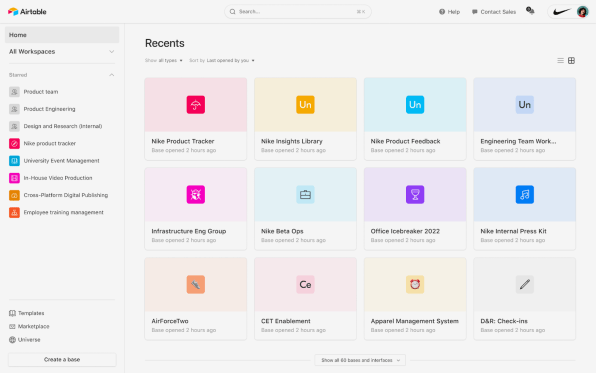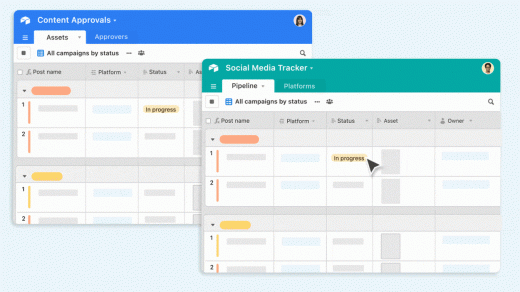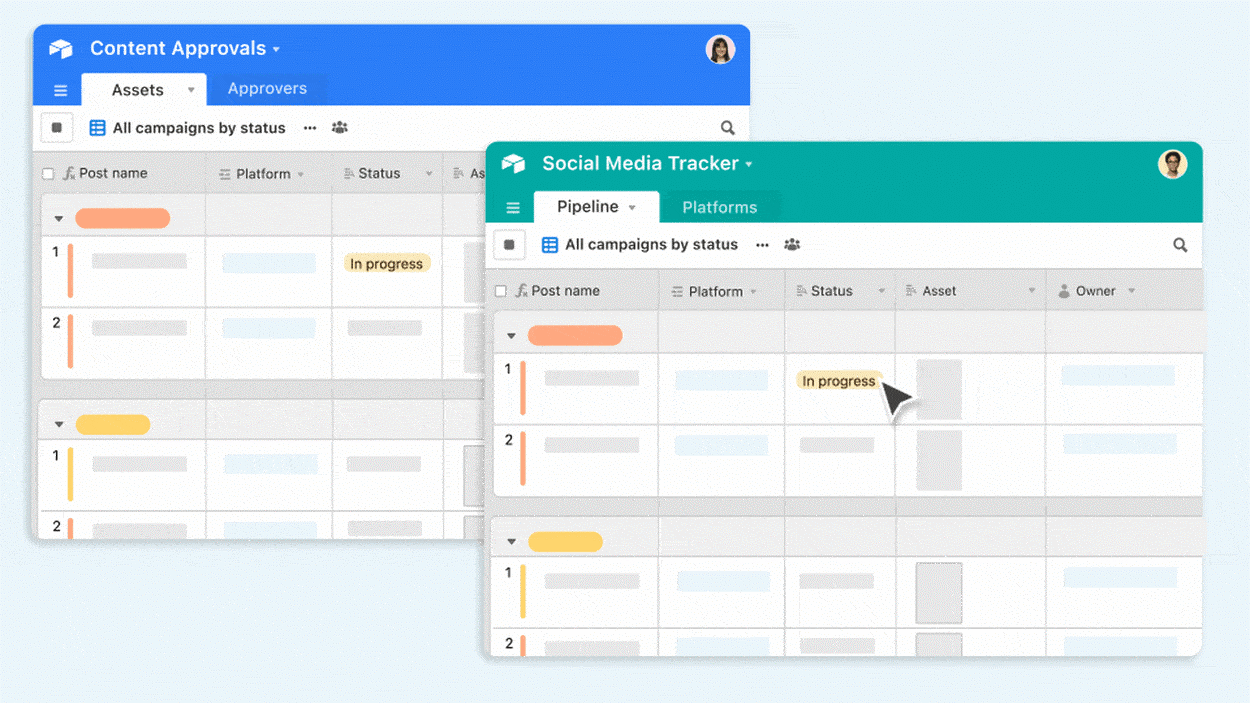Exclusive: Airtable gets an ambitious upgrade with ‘connected apps’ and redesigned home screen
Airtable, the popular workplace utility that lets teams manage and track their projects from conception to completion, is plotting its next big move. The company announced today the launch of its new Airtable Connected Apps Platform, a suite of features aimed at helping workers connect, communicate, and share complex data within departments, especially at larger companies.
Think of it this way: Departments within a big workplace are often so siloed and self-governing that they operate almost as completely separate entities, and this is especially true in today’s world of multinational conglomerates, mega-mergers, and many-tentacled corporate parents. If you recall that old idiom about the left hand not knowing what the right hand is doing, you can get an idea of the problem that Airtable is trying to solve here. While its core project-management platform has long allowed users to create their own apps, this latest incarnation, which is rolling out gradually over the next year, will allow team leaders to scale those apps across organizations. By early next year, the platform will also include a two-way sync feature that will enable the real-time updating of datasets across a company’s apps.
“What we’ve realized is that in addition to empowering people to create individual apps, there is now an even bigger need, especially within larger organizations, to coordinate across all the different apps,” Airtable CEO Howie Liu tells Fast Company. “If you’re a 10-person company, you can run pretty efficiently just by tapping each other on the shoulder. But what we’ve found—and, frankly, what I didn’t understand when I founded the company—is that at a larger and larger enterprise . . . they actually need apps that connect to each other and form this kind of ecosystem that all operate on shared data.”
For Airtable, whose user base includes Fortune 500 companies, such as Amazon, IBM, LVMH, and Nike, the move is a way to further embed its services into the everyday workflows of its biggest paying customers. Part of the trick in deciding how and when to evolve, Liu says, is closely observing how people use Airtable as a tool for problem solving, and then launching features to fit those needs. As an example, Liu cited Netflix, one of the more than 300,000 organizations that use Airtable. The streaming giant needs seamless ways to coordinate between its many moving parts, such as production, post-production, marketing, legal, and every other department under its roof. “We already offer the tool to do that with one-way sync, and now we’re offering two-way sync, which is going to allow you to have an even more powerful connection between those different apps.”
Liu calls the latest Airtable upgrade “the biggest single evolution we’ve made.” In addition to connected apps and two-way sync, it will include a revamped, customizable home screen, which will be available to Airtable’s enterprise customers today and then will roll out to everyone else early next year.

Like a lot of workplace software companies, Airtable benefited during the early stage of the pandemic when offices shifted to remote and hybrid models. The San Francisco-based firm was valued at $11 billion at the end of last year, more than 10 times what it was worth three years earlier. But it’s competing in an increasingly crowded marketplace now, with platforms like ??Asana, Monday.com, Clickup, and others all vying to be the project-management tool of choice for companies big and small.
Although the tech sector has cooled off from its early-pandemic highs—shares in publicly traded Mandy.com are down more than 67% since the beginning of 2022—the software-as-a-service (SaaS) market is projected to keep growing through the end of the decade, reaching $702.19 billion in 2030, according to Allied Market Research.
That means Airtable and its competitors will need to be even more focused on where they can differentiate themselves—something Liu seems to acknowledge in describing the company’s increased focus on larger companies.
“I think we have tried to be everything to everyone,” he says. “From a product roadmap standpoint, it’s really hard to support both the tiny small-business-use cases while also trying to serve these larger customers who are building out multi-department workflows. This is the first time where we’re really acknowledging, ‘Hey, we have to go all in on this North Star of building connected apps for the enterprise.’”
(34)



